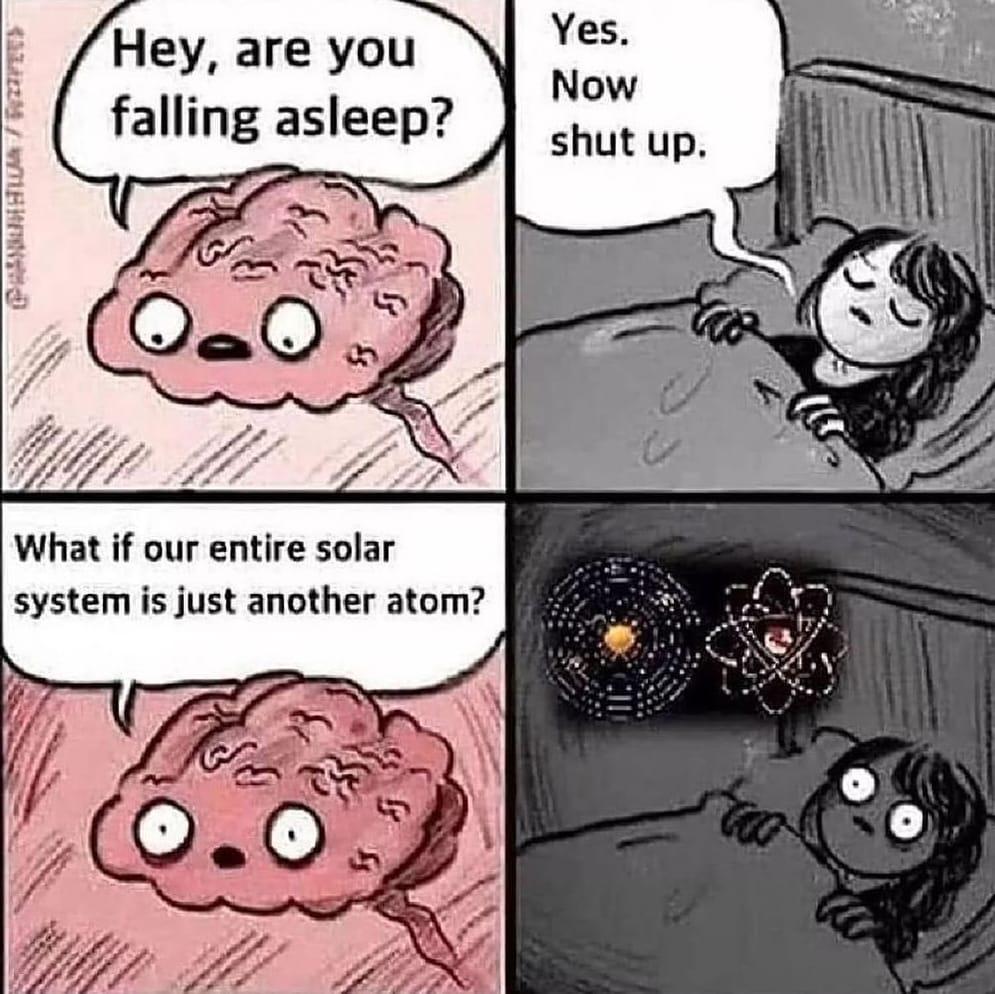this post was submitted on 03 May 2024
456 points (90.7% liked)
Science Memes
11631 readers
1359 users here now
Welcome to c/science_memes @ Mander.xyz!
A place for majestic STEMLORD peacocking, as well as memes about the realities of working in a lab.

Rules
- Don't throw mud. Behave like an intellectual and remember the human.
- Keep it rooted (on topic).
- No spam.
- Infographics welcome, get schooled.
This is a science community. We use the Dawkins definition of meme.
Research Committee
Other Mander Communities
Science and Research
Biology and Life Sciences
- [email protected]
- [email protected]
- [email protected]
- [email protected]
- [email protected]
- [email protected]
- [email protected]
- [email protected]
- [email protected]
- [email protected]
- [email protected]
- [email protected]
- [email protected]
- [email protected]
- [email protected]
- [email protected]
- [email protected]
- [email protected]
- [email protected]
- [email protected]
- [email protected]
- [email protected]
- [email protected]
- [email protected]
- !reptiles and [email protected]
Physical Sciences
- [email protected]
- [email protected]
- [email protected]
- [email protected]
- [email protected]
- [email protected]
- [email protected]
- [email protected]
- [email protected]
Humanities and Social Sciences
Practical and Applied Sciences
- !exercise-and [email protected]
- [email protected]
- !self [email protected]
- [email protected]
- [email protected]
- [email protected]
Memes
Miscellaneous
founded 2 years ago
MODERATORS
you are viewing a single comment's thread
view the rest of the comments
view the rest of the comments

you have to fail intro to qm 101 and/or be stoned out of your mind to think this way
Or just reject planck length and all other dimensional limitations like it. Then you can have ~~turtles~~ universes all the way down.
Planck length is not like universal pixels. It's just where current models say there's little reason to look at smaller things, since it's kind of like worrying about which flecks of paint are coming off a car in a racing video game. It's just ... so irrelevant as to be ignorable.
It's nigh impossible to have any energy that could interact with us or atoms on the Planck length scale that wouldn't just collapse in to a black hole. It's not so much any observation of real-world pixelation, and more that even to atoms, it's very tiny.
Your comment about current models, known energy types, and universal pixels seems to ignore the post's topic (which isn't really about known models or energy types).
A better way to disregard the post would be to just point out that solar systems aren't that big in terms of scales of the universe, and that there's no indication of any charges, electrons, or valance layers about.
I'm not responding to the comic. I'm responding to you talking about the Planck length. I'm not disregarding the comic but making a tangential comment. Please try to keep up.
No.
Your loss! 🤷
planck length doesn't come up even once, it all boils down to these things: 1. electron has momentum, and from that follows it has a wavelength, and at the same time 2. orbit is stable, which means that after every "rotation" electron has to end up with the same phase, which means there is only a finite number of solutions to time-independent schroedinger equation for (hydrogen) atom (don't bother solving it on paper for anything with more than one electron) and these things are spherical harmonics
And why is that?
planetary orbits are not quantized, for starters. atomic orbitals are occupied by pairs (at most) of electrons, and this is because of qm spin exists which has no analogue in large scale. electrons aren't spinning around on an orbit, they're more of a smudged standing wave. it's also a staple among vapid thonkers like mckenna
Here's a few reasons this doesn't work:
Thank
Can confirm the latter makes you consider this
Can confirm, this is ALL I see on certain substances